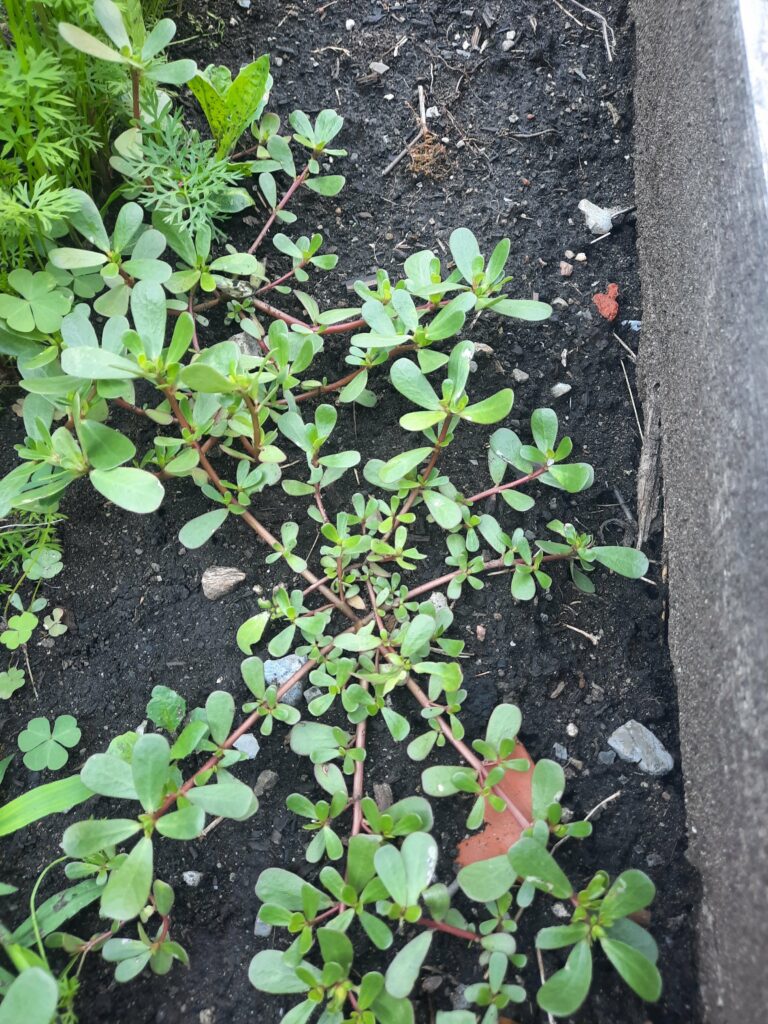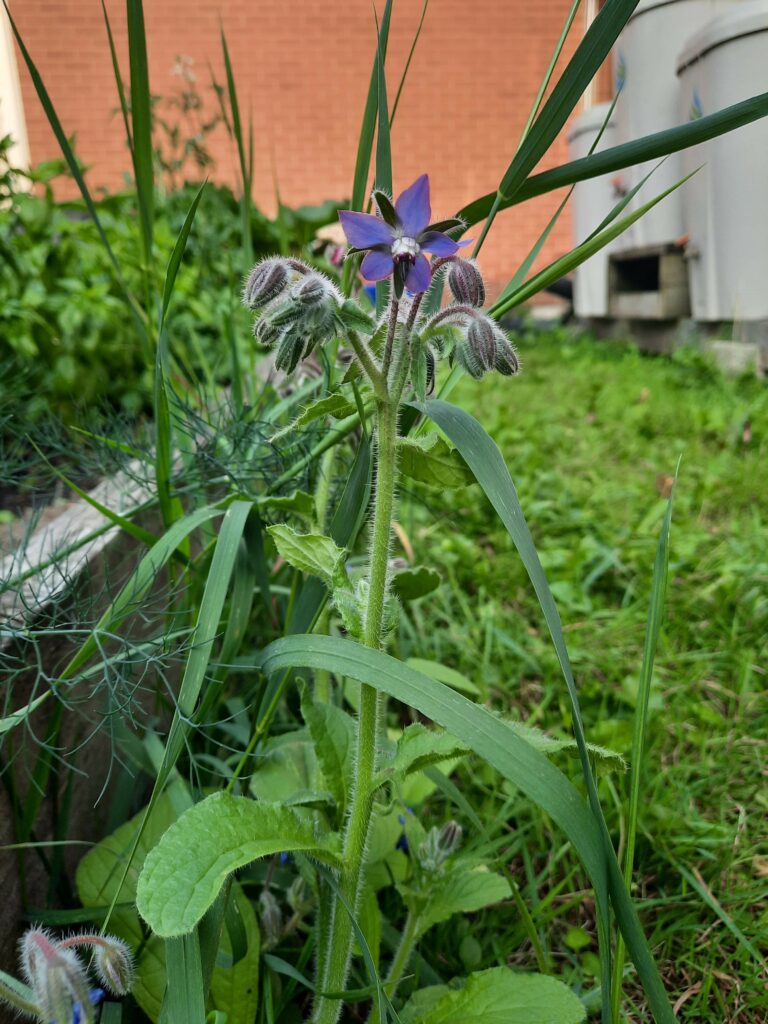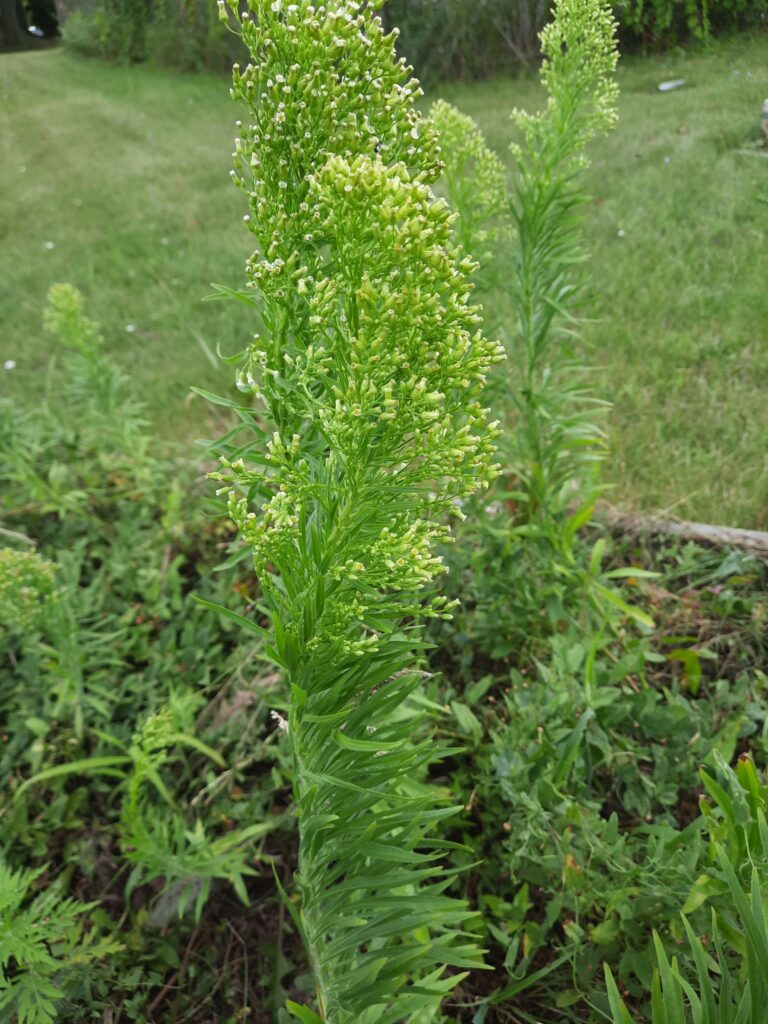Many of the plants that were not planted deliberately are still beloved, and some were planted deliberately but have since made the space their own with little maintenance! These plants can be removed if they become intrusive and take resources away from the deliberate plants, otherwise leave them to encourage plant diversity and attract pollinators.
Milk Weed
Milkweed is an essential plant to monarch butterflies because monarch larvae will only eat milkweed leaves! The pollinators lay their eggs on the underside of the plant’s leaves. When the eggs hatch, they begin munching on the thick, elliptical leaves.
Milkweed plants emerge throughout the garden beds and in the grassy areas between. The stalks features opposite leaves that grow in pairs. The five-petalled flowers emerge in clusters and range from white to oragne to purple.

Horsetail

Horsetail is an edible plant recognizable by it’s hollow stem and absence of leaves – instead, it has green “branch-like” arms that photosynthesize. The plant is a member of the fern family, and is known to have emerged in the Jurassic era! Some people claim teas and balms help with kidney and bone health; however there is little research into medicinal uses. Remove the plant from beds, but you can leave some around the space.
Lemon Balm
Lemon balm originated in Europe. It is a delicious herb that can be added to tea, lemonade, and salads for a refreshing boost!
Lemon Balm was planted in the garden on purpose once, but now reminds us that mint family plants are hardy and come back every year so they must be planted in containers not beds. We moved some to a pot for continued harvest, so please dig out what you see in the ground to prevent it from taking over!

Common Purslane

Common purslane is an edible, non-native plant present in all nestled garden beds and planters. Unlike many of the planted plants, common purslane takes some time to visibly develop its tiny, red “leaved” babies with shallow roots, but, once established, it grows quite quickly like the left image.
Though it doesn’t suffocate other plants like Dog Strangling Vine does, if you’ve planted densely you may want to give the ground space and water to the intentional plants. The shallow roots make this easy to pull; however, the seeds can remain dormant for up to 10 years so it will be back next summer!
Horseweed
Horseweed is a native plant common throughout the territories of the Anishinabewaki, Odawa, Algonquin, Mohawk, Onandaga, and Cree peoples. The young leaves are edible, and can be boiled or dried to add onion-y, tarragon-y flavors to foods.
Some consider horseweed to be a garden nuisance because of its high water demands and aggressive, wind-spread seeds; however, horseweed attracts many pollinators. To balance the pollinator attraction and seed aggression, try letting some plants go to flower and pull all plants before they get to seed.
Borage


Borage, or starflower, is a common and resilient plant that comes back every year! Though originated in Europe, it does not outcompete against native plants, and attracts native pollinators, so it is not considered invasive. It’s considered a great companion plant to tomatoes because it deters hornworms.
While it does have tasty leaves and is often considered an herb, borage should not be eaten in large quantities, especially if pregnant!
Further Reading
- Common Purslane
- https://hort.extension.wisc.edu/articles/common-purslane-portulaca-oleracea/
- Horseweed
- https://www.ediblewildfood.com/horseweed.aspx
- https://www.inaturalist.org/guide_taxa/1425299
- https://minnesota.publicradio.org/features/2010/04/documents/treatyrights.pdf
Leave a Reply